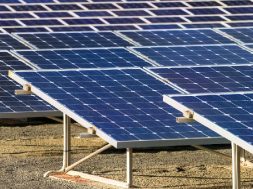
India and The Solar Advantage
When it comes to cleaner fossil fuels, India has only limited resources. The principal energy source for the country is coal which is the dirtiest fossil fuel. Calorific value (a measure of thermal energy available in the fuel) of coal is very low compared to other fossil fuels like natural gas. Coal combustion produces many toxic gases and fumes apart from the greenhouse gases responsible for global warming. These are associated with acid rains, desertification, poisoning of drinking water and many respiratory ailments.
It is widely accepted that for countries like India, it is essential to reduce dependency on fossil fuels and increase the proportion of renewables in the energy mix. Till a few years ago, the government largely focused on hydropower as the primary renewable source. India’s first Prime Minister Jawaharlal Nehru referred to dams as ‘the temples of modern India’. India utilized most of its Big-dam hydroelectric potential but at a cost; Land submergence, displacement of tribal populations from their ancestral home and damage to local ecosystems. Submerged land also generates a large amount of methane due to decomposition of dead fauna, which is a greenhouse gas far stronger than carbon dioxide. All these factors have made the hydropower less attractive as a renewable option.
Solar and Wind energy is more acceptable to environmentalists due to their low negative externalities. And even among them, solar is most popular in the Indian context. This is because India has a clear sky for 300 days a year and being a tropical country, get an extensive amount of sunlight. In fact, electricity production per kilowatt solar installation is the highest in India compared to any other country in the world. And unlike other resources, renewables don’t lead to ‘resource curse’ as it makes the economy more productive, self-reliant and more resilient to energy price fluctuations.
Solar Power plants are the greenest form of renewable since it does not emit carbon dioxide (nor nuclear waste) and the photovoltaic panels are made mostly of silicon which is a very abundant mineral on earth. The only carbon footprint made by a solar power plant is due to emission during the production of the panels which is quite low compared to other energy sources (22-46g greenhouse emission per kWh in solar power plant vs 915–994 g/kWh in coal power plant.)
The solar movement began by large solar parks and now Rooftops solar plants are making the headway. Individual rooftop solar plant which had been shadowed by solar parks is now looking more attractive as it doesn’t require large tracts of land. There has been a paradigm shift in Home Solar Energy Systems internationally and the seismic waves of that tectonic shift have now reached India.
Solar rooftop systems allow households to produce their own electricity which not only helps them to reduce power bill but also get reliable power. Solar Panels are not expensive like it was years ago, and it has become very economical for households to install such systems as they get breakeven in just a few years. Roofs of every house, building and railway station is now a potential site of solar power plant. All these advantages of solar power plants in India make the case of highest allocation for solar energy in Indian energy mix.
















